Understanding the Free Appropriate Public Education Mandate
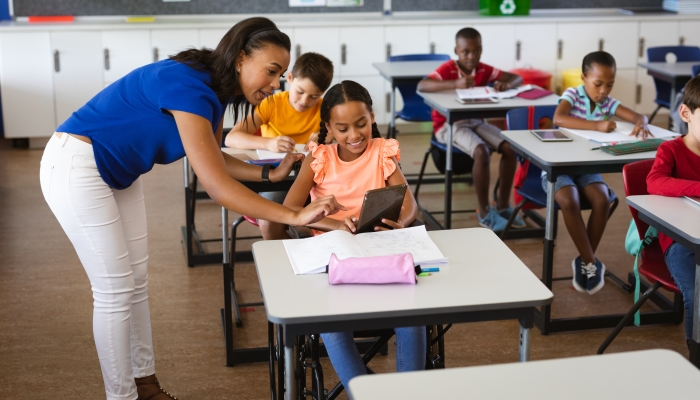
- The Free Appropriate Public Education (FAPE) mandate is fundamental in ensuring children with disabilities have access to an education that prepares them for further education, employment, and independent living.
- Parents need to advocate for special education services depending on their child’s specific needs.
- A student’s eligibility for FAPE is determined by their need for special education and related services.
As parents, one of the most important things we can do is advocate for our child’s education. Rightfully, parents of disabled children want to ensure their child receives the same education as their peers.
The FAPE mandate provides free appropriate public education to qualified persons with disabilities. FAPE isn’t designed to provide students with disabilities with more educational benefits than their peers. Instead, it’s meant to provide an appropriate education on the same level or equal to that of students without disabilities.
The logistics of special education can be a learning process; however, with insight, you’ll better understand what you and your child are entitled to.
Components of FAPE
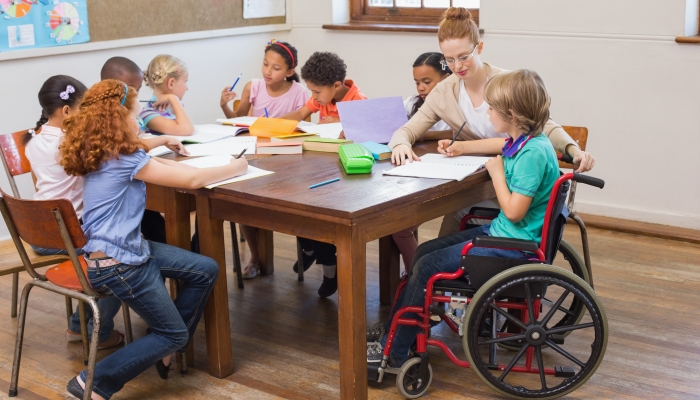
The Free Appropriate Public Education (FAPE) mandate is a vital component of the Individuals with Disabilities Act (IDEA), a United States federal law addressing the education of children with disabilities.
Special education law ensures disabled children are offered free education and access to specially designed instruction to help them succeed.
FAPE ensures all eligible children with disabilities receive an education tailored to their needs at no cost to their parents.
FAPE covers the following four components:
- Free (at no cost to the parent)
- Appropriate (IEPs outline a specific program to meet a student’s needs)
- Public (students have the same rights to attend public school as other children)
- Education (provide accommodations to participate in the general education curriculum)
According to the US Department of Education, regarding eligibility for elementary and secondary education programs11. Free Appropriate Public Education for Students With Disabilities: Requirements Under Section 504 of The Rehabilitation Act of 1973. US Department of Education. 2010. https://www2.ed.gov/about/offices/list/ocr/docs/edlite-FAPE504.html#:~:text=The%20Section%20504%20regulation%20requires,severity%20of%20the%20person’s%20disability., a qualified person with a disability is a person with a disability who is:
- Of an age during which it’s mandatory under state law to provide such services to persons with disabilities;
- Of an age during which persons without disabilities are provided such services; or
- Entitled to receive a free appropriate public education under IDEA.
Appropriate Education
An appropriate education includes related services specifically designed to meet the unique needs of children with disabilities. The term “appropriate” is essential because it emphasizes that education should be tailored to each student’s needs.
In addition, students are assigned Individualized Education Programs (IEPs) to outline their specific educational plan, which includes the following information:
- The child’s current academic level
- Annual goals
- Special education and related services
- Necessary accommodations
- How progress will be measured
An IEP is vital to ensure the educational program is specific to a student’s needs and meets the FAPE mandate. Promoting special needs advocacy is essential for a successful educational program for disabled children.
In the Least Restrictive Environment (LRE)
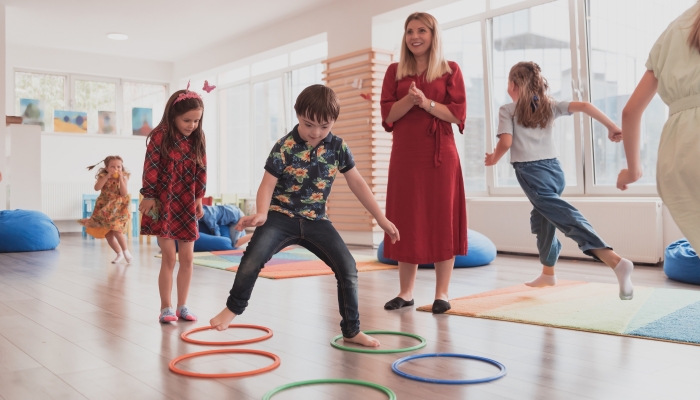
An essential aspect of FAPE is placing students with disabilities in the least restrictive environment to help meet their environmental needs. In other words, to the maximum extent possible, students with disabilities should be educated along with their non-disabled peers and not separated.
An example of where the LRE is important is adapted physical education, which ensures disabled students are given the same opportunities as their peers. All children need to participate in physical education, regardless of their abilities.
Public school districts can help ensure the LRE22. Graham, E.. Maximizing Student Success with Least Restrictive Environments and Appropriate Models of Inclusion. NEA Today. 2022. https://www.nea.org/nea-today/all-news-articles/maximizing-student-success-least-restrictive-environments-and-appropriate-models-inclusion through:
- A fully accessible educational environment
- Student placement based on individual needs, not available space
- Limitations in class size when possible
- Promoting an inclusive classroom
Supplementary Aids and Services
A student’s removal from the regular education setting33. Southwest ADA Center. Disability Rights Laws in Public Primary and Secondary Education: How Do They Relate?. ADA National Network. https://adata.org/factsheet/disability-rights-laws-public-primary-and-secondary-education-how-do-they-relate should only occur when education in general education classes can’t be achieved satisfactorily using supplemental aids and services.
Examples of nonacademic and extracurricular supplementary aids and services include:
- Counseling services
- Athletics
- Transportation
- Health services
- Recreational activities
- Special interest groups or clubs
When determining necessary aids and services, all significant factors related to the student’s needs should be considered.
Legal Framework Behind FAPE
The three primary laws that protect the rights of students with disabilities in public schools are:
- The Individuals with Disabilities Education Act
- Section 504 of the Rehabilitation Act
- Title II of the Americans with Disabilities Act

The Individuals with Disabilities Education Act
The Individuals with Disabilities Education Act (IDEA) is integral to FAPE, making free appropriate public education available to eligible children44. About IDEA. Individuals with Disabilities Education Act. https://sites.ed.gov/idea/about-idea with disabilities nationwide. In addition, schools are required to offer individualized educational programming depending on a student’s circumstances to allow for appropriate progress.
Key provisions of IDEA related to FAPE include:
- Free appropriate public education
- Appropriate evaluation
- Individualized education plan
- Least restrictive environment
- Parent participation
- Procedural safeguards
IDEA has evolved since it was first known as the Education of Handicapped Children Act55. What is the Individuals with Disabilities Education Act?. DO-IT University of Washington (UW). 2022. https://www.washington.edu/doit/what-individuals-disabilities-education-act#:~:text=It%20was%20originally%20known%20as,ensure%20equal%20access%20to%20education. in 1975. In 1990, amendments to the law were passed, leading to it being renamed the Individuals with Disabilities Education Act. In 1997 and 2004, additional revisions were made, ensuring equal access to education.
Section 504 of the Rehabilitation Act
Section 504 of the Rehabilitation Act66. Your rights under Section 504 of the Rehabilitation Act. U.S. Department of Health and Human Services. 2006. https://www.hhs.gov/sites/default/files/ocr/civilrights/resources/factsheets/504.pdf prohibits discrimination against qualified individuals based on disability. According to Section 504, qualified individuals are defined as persons with a physical or mental impairment substantially limiting one or more major life activities.
Unlike IDEA, which isn’t an anti-discrimination law, Section 504 ensures everyone is entitled to the same public education.
Consider it this way: IDEA offers free appropriate public education, while Section 504 ensures eligible students, despite disabilities, can receive the same education as their peers.
Americans with Disabilities Act
In 1990, the Americans with Disabilities Act77. Americans with Disabilities Act. Department of Labor. https://www.dol.gov/general/topic/disability/ada#:~:text=The%20Americans%20with%20Disabilities%20Act,local%20government’%20programs%20and%20services. (ADA) was passed into law, prohibiting discrimination against people with disabilities. While the ADA frequently pertains to areas like transportation, public accommodations, and employment, it also affects schools.
Specifically, title II of the ADA prohibits discrimination by state and local governments, including private or public institutions.
Implementation of FAPE
The educational benefit of FAPE depends on the correct implementation within school districts of school education programs and in the general education classroom.

Role of School Districts
A student’s school district is essential in implementing FAPE and handling resource allocation and logistical challenges.
School districts are required88. Lee, A.. What is and isn’t covered under FAPE. Understood.org. https://www.understood.org/en/articles/what-is-and-isnt-covered-under-fape to:
- Provide special education to meet the unique needs of a student.
- Provide related services to help the child benefit from special education, including speech therapy, counseling, or transportation.
- Provide the above services at no cost to parents or caregivers.
- Provide modifications and accommodations that help students learn and participate in the general education curriculum (i.e., audiobooks and extra time on homework).
- Create an Individualized Education Program (IEP).
- Teach students in the least restrictive environment.
While FAPE is generally utilized in public schools, there are exceptions for eligible students enrolled in a private school.
IEP Meetings and Parental Involvement
Parents need to attend IEP meetings with the IEP team and advocate for FAPE, ensuring their children are adequately covered. If your child isn’t performing at grade level, they’ll require specialized instruction tailored to their specific needs.
During IEP meetings, you can discuss the degree of regular or special education required, including related aids and services to meet the student’s unique needs.
In addition, it’s important to schedule an IEP team meeting regularly with a student’s parents to discuss their progress.
Resolving Disagreements and Disputes
Schools and families may occasionally disagree about what FAPE requires for a child or the type or amount of services ensuring they receive special education services.
While it’s best to work together to find a solution, there are options if you don’t feel the FAPE mandate is adequately being met at your child’s school.
In addition, IDEA offers several ways to resolve disputes99. Lee, A.. 6 options for resolving an IEP dispute. Understood.org. https://www.understood.org/articles/6-options-for-resolving-an-iep-dispute, including the following six options:
- Negotiation
- Mediation
- Due process hearing
- Lawsuit
- State complaint
- Office for Civil Rights complaint
What FAPE Doesn’t Provide
To further understand FAPE, it’s best to know schools aren’t required to do the following:
- “Maximize” a child’s potential by providing the best services possible. Instead, the law requires schools to provide “reasonably calculated” services to help a child’s progress.
- Provide a specific educational program or setting that the parent or caregiver wants for a child. While parents are team members who created an IEP and offer input, FAPE doesn’t require schools to offer a special educational program. In addition, the IEP team makes the final decision based on the child’s needs.
- While schools are required to give kids equal opportunity to participate in activities, FAPE doesn’t guarantee a child a spot in an extracurricular activity or sport.
Challenges in Providing FAPE
While the FAPE mandate is a crucial component in ensuring that children with disabilities receive an education individualized to their specific needs, there are challenges in its implementation.
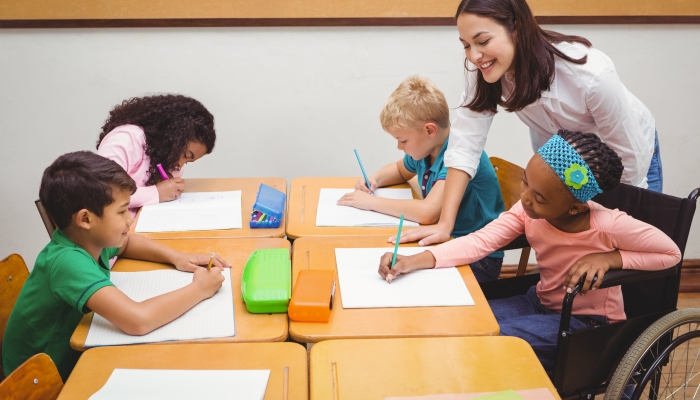
Funding and Resource Limitations
It’s vital for educators, parents, and policymakers to work together to ensure financial limitations don’t compromise the effectiveness of FAPE for students who need it most.
Examples of funding and resource limitations include:
- Insufficient budgets
- Limited specialized services
- Personnel shortages
- Inadequate professional development
- High costs of assistive technology
- Transportation costs
While FAPE has challenges, there are strategies schools can implement to maximize resources, such as:
- Advocate for increased funding.
- Ensure sufficient use of existing resources.
- Collaborate with community stakeholders.
- Explore innovative solutions.
Keeping Up with Educational Advances
Technology is an ever-changing world; with proper financing, it can be easier to keep up with educational advances, particularly regarding special education services.
In addition, every school district needs to ensure staff training and professional development to keep up with educational advances.
Here are some additional ways schools can keep up with educational advances:
- Join professional organizations related to special education.
- Attend workshops, seminars, and conferences related to FAPE and educational performance and advances.
- Monitor governmental agency updates responsible for special education programs.
- Participate in online courses and webinars focused on special education law.
- Network with peers, professionals, and other administrators to share experiences and best practices.
- Routinely review FAPE regulations and guidelines.
Inclusivity and Equity Issues
Unfortunately, ensuring that students with disabilities are taught in the least restrictive environment can be challenging. For example, there could be resistance or a need for more understanding among administrators and teachers about the benefits of inclusive practices.
In addition, students with disabilities come from diverse linguistic and cultural backgrounds, which can create language barriers.
To help prevent potential issues, teachers should receive specialized training to address the specific needs of students with disabilities effectively.
FAPE and Private Schools
Students with disabilities attending a private school are covered under the ADA; however, a school district isn’t required to pay for a student’s education in a private school. Parents may want their children to attend private school if they don’t believe the local school district is providing FAPE.
Federal law1010. QUESTIONS AND ANSWERS ON SERVING CHILDREN WITH DISABILITIES PLACED BY THEIR PARENTS IN PRIVATE SCHOOLS. Department of Education. 2022. https://sites.ed.gov/idea/files/QA_on_Private_Schools_02-28-2022.pdf states:
“While IDEA provides no individual entitlement to children with disabilities whose parents have placed them in a private school when FAPE is not at issue, the law does require that (a school district) spend a proportionate amount of its IDEA Part B funds to provide equitable services to this group of children, which could include direct and/or indirect services.”
FAPE in the Digital Age
The pandemic has changed how children learn, and we’ve entered a virtual world of learning. While many students have returned to the classroom, digital learning environments exist, and it’s crucial for FAPE to stay current in the digital age.

Virtual Learning and Accessibility
It’s crucial to ensure FAPE continues despite the rise of digital learning environments, including providing technological tools and strategies for accessible remote education.
During the pandemic, school districts were required to offer distance learning opportunities for students with disabilities. A 2020 fact sheet1111. Supplemental Fact Sheet Addressing the Risk of COVID-19 in Preschool, Elementary and Secondary Schools While Serving Children with Disabilities. Individuals with Disabilities Education Act. 2020. https://sites.ed.gov/idea/idea-files/supplemental-fact-sheet-addressing-risk-covid-19-preschool-elementary-secondary-schools-serving-children-disabilities-march-21-2020 issued by the Office of Civil Rights and the Office of Special Education and Rehabilitative Services states that:
“School districts must provide a free and appropriate public education (FAPE) to students with disabilities, and the provision of FAPE may include, as appropriate, special education and related services that can be provided via computer, internet, or phone.”
Data Privacy and Security
Another aspect of ensuring a successful FAPE mandate is protecting a student’s information, which includes balancing technological advancement and privacy concerns.
Essential aspects to consider regarding the privacy and security of FAPE include the following:
- Confidentiality of student information
- Compliance with laws and regulations
- Secure storage and transmission
- Staff training and awareness
- Data minimization
- Parent consent
- Regular privacy assessments
When schools prioritize data privacy and security, they create a safe and conducive environment for offering FAPE while respecting the privacy and rights of students and their families.
FAQs
How is free education defined?
Free education is education without the requirement of tuition or additional fees. However, parents are required to pay the same extra school fees at private schools, including sports and club fees.
What are parents’ rights under the FAPE mandate if they disagree with a school’s proposed Individualized Education Program?
If a parent disagrees with their child’s proposed Individualized Education Program (IEP) or how their school district handles specific matters, they should consult with the IEP team. After discussion, it may be decided that additional child services are better available to enhance the student’s special education program.
What steps should a school take when a student’s needs exceed what the school can provide under FAPE?
If a student’s needs exceed what a specific school can provide under FAPE, they may consider the following steps:
- Convene an IEP meeting.
- Consider an independent educational evaluation.
- Collaborate with special education professionals.
- Consider alternative interventions.
- Consider placement options.
References
- Free Appropriate Public Education for Students With Disabilities: Requirements Under Section 504 of The Rehabilitation Act of 1973. US Department of Education. (2010, August). https://www2.ed.gov/about/offices/list/ocr/docs/edlite-FAPE504.html#:~:text=The%20Section%20504%20regulation%20requires,severity%20of%20the%20person’s%20disability.
- Graham, E. (2022, May 12). Maximizing Student Success with Least Restrictive Environments and Appropriate Models of Inclusion. NEA Today. https://www.nea.org/nea-today/all-news-articles/maximizing-student-success-least-restrictive-environments-and-appropriate-models-inclusion
- Southwest ADA Center. (n.d.). Disability Rights Laws in Public Primary and Secondary Education: How Do They Relate? ADA National Network. https://adata.org/factsheet/disability-rights-laws-public-primary-and-secondary-education-how-do-they-relate
- About IDEA. Individuals with Disabilities Education Act. (n.d.). https://sites.ed.gov/idea/about-idea
- What is the Individuals with Disabilities Education Act? DO-IT University of Washington (UW). (2022, May 24). https://www.washington.edu/doit/what-individuals-disabilities-education-act#:~:text=It%20was%20originally%20known%20as,ensure%20equal%20access%20to%20education.
- Your rights under Section 504 of the Rehabilitation Act. U.S. Department of Health and Human Services. (2006). https://www.hhs.gov/sites/default/files/ocr/civilrights/resources/factsheets/504.pdf
- Americans with Disabilities Act. Department of Labor. (n.d.). https://www.dol.gov/general/topic/disability/ada#:~:text=The%20Americans%20with%20Disabilities%20Act,local%20government’%20programs%20and%20services.
- Lee, A. (n.d.). What is and isn’t covered under FAPE. Understood.org. https://www.understood.org/en/articles/what-is-and-isnt-covered-under-fape
- Lee, A. (n.d.). 6 options for resolving an IEP dispute. Understood.org. https://www.understood.org/articles/6-options-for-resolving-an-iep-dispute
- QUESTIONS AND ANSWERS ON SERVING CHILDREN WITH DISABILITIES PLACED BY THEIR PARENTS IN PRIVATE SCHOOLS. Department of Education. (2022). https://sites.ed.gov/idea/files/QA_on_Private_Schools_02-28-2022.pdf
- Supplemental Fact Sheet Addressing the Risk of COVID-19 in Preschool, Elementary and Secondary Schools While Serving Children with Disabilities. Individuals with Disabilities Education Act. (2020, November 24). https://sites.ed.gov/idea/idea-files/supplemental-fact-sheet-addressing-risk-covid-19-preschool-elementary-secondary-schools-serving-children-disabilities-march-21-2020
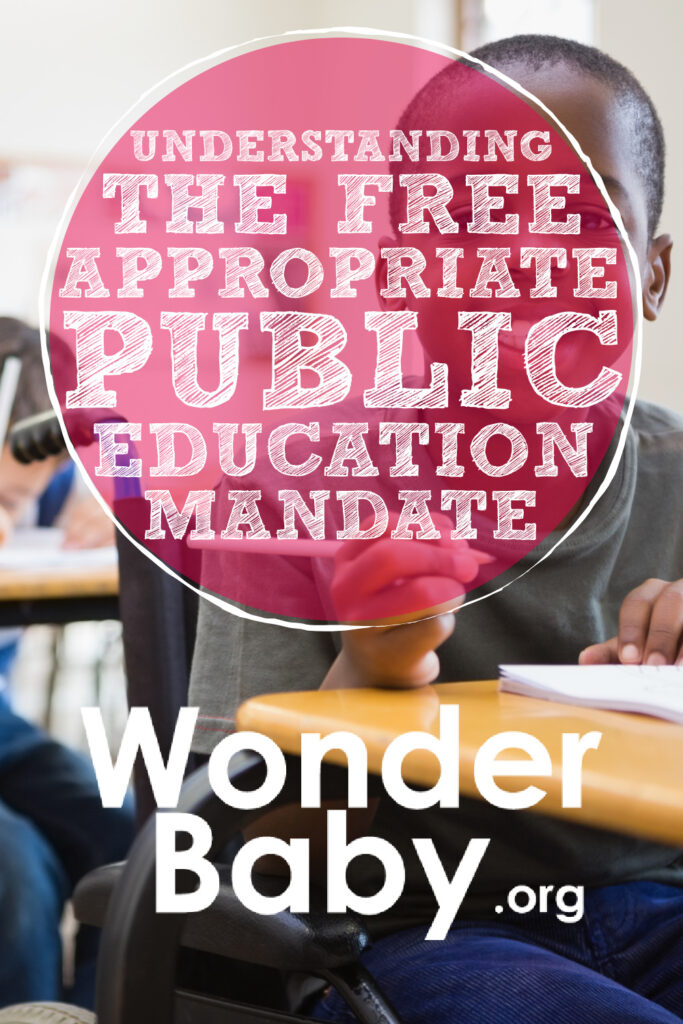
Related Posts

Eye Conditions and Syndromes, Visual Impairment
Neuralink Announces Plans to Restore Sight to the Blind with Brain Chip
Elon Musk’s company Neuralink has announced plans to begin human trials of its new “Blindsight” brain chip by the end of 2025.

IEPs
What Should I Bring to My Child’s First IEP Meeting?
Prepare for your child's first IEP meeting with confidence! Discover exactly what documents to bring, including educational records, medical info, and questions to ask.

Special Needs
5 Spring Cleaning Tips for Families of Children with Disabilities
Spring cleaning is an opportunity to create a more accessible, organized, and supportive space for your child with disabilities. Declutter, deep clean, and refresh!